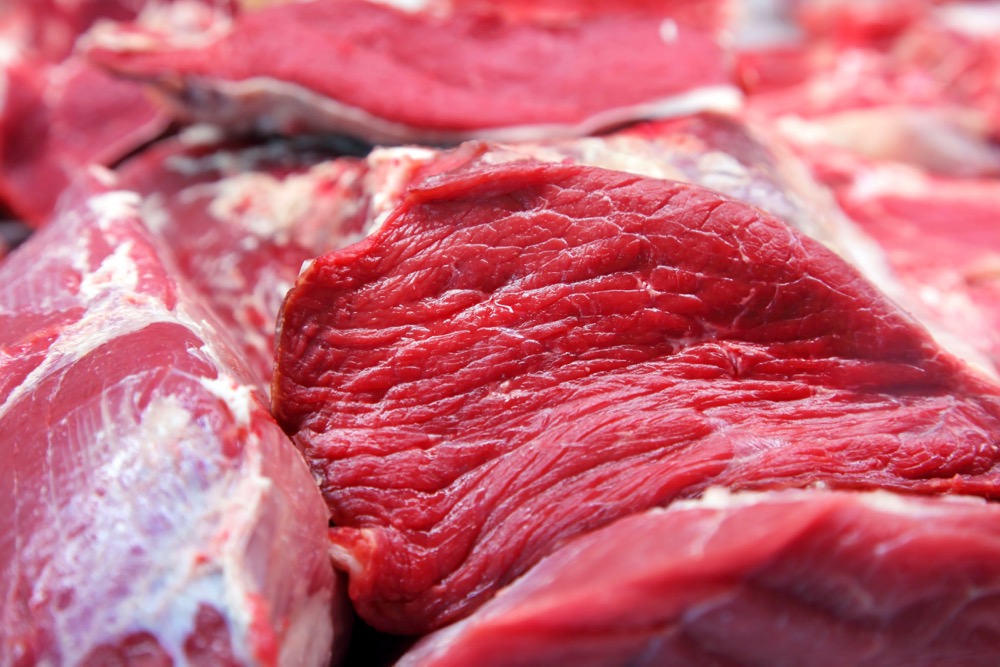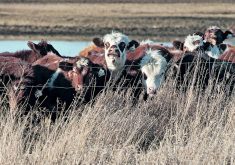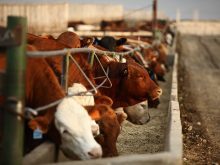Compared to last week, western Canadian yearling prices were unchanged while calves were steady to $2 higher on average.
Auction barns received larger supplies of backgrounded cattle and there was a fair amount of direct trade of yearlings off farm. Larger supplies of heavier-weight feeders appeared to limit the upside but there was no slippage. Major feedlot operators absorbed the surge in numbers quite easily. Discounts were prevalent and sometimes severe on flesh levels and smaller-frame second-string cattle. Major feedlots focused on local cattle so traditional transportation spreads were evident from non-major feeding areas. Calves were well bid across the Prairies. The southern Prairie regions and central Alberta have received less than 40 per cent of normal precipitation over the past 60 days. Grass cattle are holding value, but the bulk of the lighter weights are moving into the feedlot. The farmer-cattle producer is sitting on his or her hands for the time being, waiting until grass conditions are more certain. Deferred live cattle futures were under pressure, which may have tempered the calf market this week.
Read Also

U.S. grains: Soybeans hit six-week low as Brazilian harvest looms; corn, wheat sag
Chicago | Reuters – Chicago soybean futures fell to six-week lows on Friday as worries about slowing export demand for…
In the Lethbridge area, larger-frame black steers weighing a hair under 1,000 lbs. sold for $175. In central Alberta, Simmental mixed steers with full health program on light grain ration averaging 810 lbs. sold for $181; similar-quality and -weight heifers dropped the gavel at $168. East of Saskatoon, larger-frame Angus-based steers with medium flesh weighing a shade over 850 lbs. were quoted at $176 and mixed heifers averaging 800 lbs. were valued at $161. In Manitoba, Charolais-based steers averaging 825 lbs. were quoted at $180.
In southern Alberta, a larger group of Simmental-based steers weighing 640 lbs. were valued at $226 and similar quality heifers averaging 605 lbs. were quoted at $203. Southeast of Edmonton, a small group of Hereford-based steers averaging 540 lbs. were quoted $240 and Angus-blended heifers weighing 538 lbs. were reported at $216. In central Saskatchewan, tan steers weighing 530 lbs. reportedly sold for $246.
People are eating more beef at higher prices. This is the only recession in history where average incomes have increased. There is a direct correlation with consumer spending and beef demand. There has also been a shift in demand from a change of lifestyle. Stay-at-home advisories and constraints in extracurricular activities have resulted in people eating more beef at home. When people eat at home, beef consumption is higher compared to in a restaurant — for example, via second helpings and refrigerated leftovers. Higher wholesale beef values are underpinning fed cattle values and spilling over into the feeder market. COVID-19 has not been negative for beef demand.
— Jerry Klassen manages the Canadian office of Swiss-based grain trader GAP SA Grains and Produits Ltd. and is president and founder of Resilient Capital, specializing in proprietary commodity futures trading and market analysis. Jerry consults with feedlots on risk management and writes a weekly cattle market commentary. He can be reached at 204-504-8339 or via his website at ResilCapital.com.















